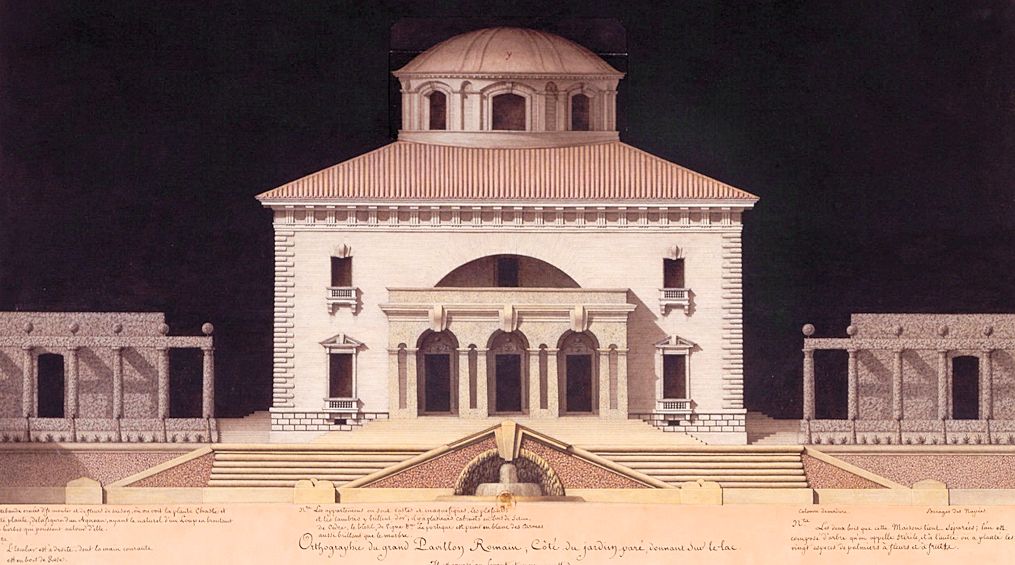The Roman Pavilion is an instance of the return to the Renaissance which became characteristic of the nineteenth century. This is . . .
| |
From the ultimate stage of the Baroque with its marked exaggeration of forms and its affections from classicism and exoticism, Lequeu passed to the peternatural. Anticipating the twentieth century, Boullée and Ledoux restored the elementary forms to their rightful place in architecture. Moreover, Ledoux showed his progressiveness in his attempts to find a new order of the elements.
Lequeu was destined to introduce into building the emotional and the irrational in a higher degree than the two older artists. His weird fantasies reveal much of his era to one who is interested in the development of artistic ideas rather than in practical improvement. . . . looked back to remote times and remote regions, he was nonetheless a forerunner of a significant current in the early twentieth century. Here and there similar unrest and similar incertitude inspired strange performances; here and there expressiveness counted more than formality; then, as now, great and dignified works emerged from the turmoil. It is not my intention to imply any direct connection between 1800 and 1900; I am concerned only with the continuity of ideas.
Le Geay and Lequeu, who died in the dark, Boullée and Ledoux, who ended in doubt, all were seers of faraway goals. None left examples for easy imitation. But the revision most certainly ushered in that "new day" which Ledoux so hopefully awaited.
|
